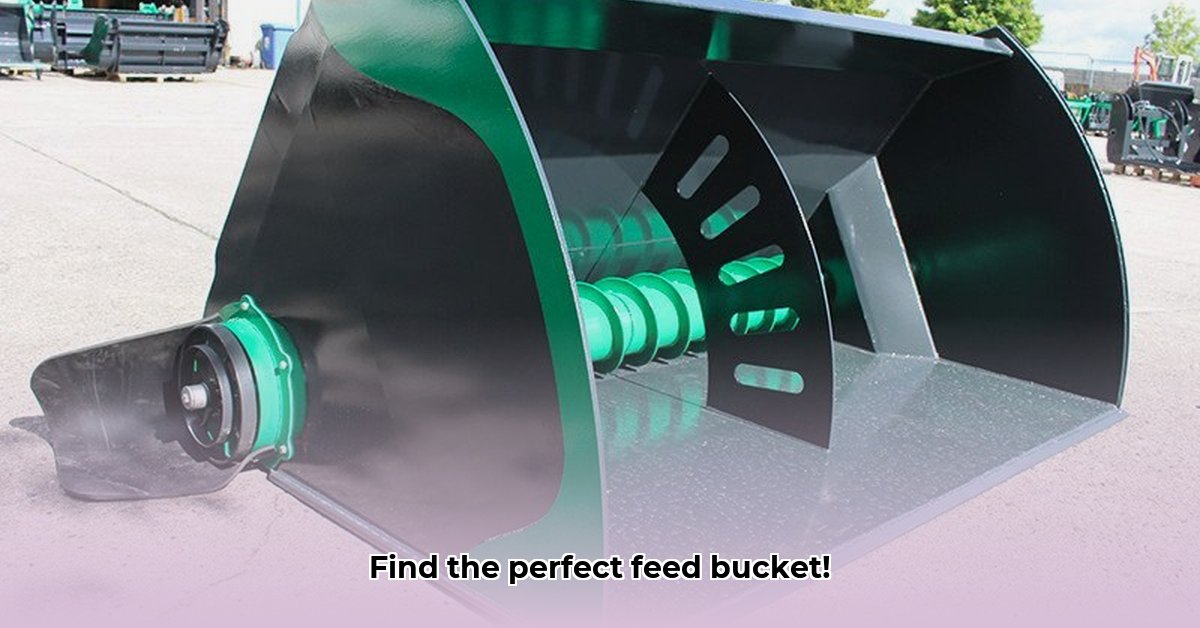
Choosing the right feed bucket can significantly impact your animal's well-being and your daily chores. Tractor Supply offers a diverse range of options, making the selection process crucial. This comprehensive guide will help you navigate the choices and find the perfect fit for your needs and livestock. We'll explore various materials, sizes, and features to help you make an informed decision. For more on metal options, check out Tractor Supply's metal buckets.
Understanding Your Needs: A Tailored Approach
Before diving into specific Tractor Supply offerings, carefully assess your animals' requirements. The size and type of your animal will dictate the necessary bucket size. Would a small bucket suffice for a single goat, or do you need a larger capacity for a herd of cattle? An oversized bucket is as impractical as an undersized one.
The material is another vital consideration. Heavy-duty plastic is popular for its durability and ease of cleaning. However, metal buckets, often galvanized steel, offer superior strength but require more meticulous care to prevent rust. Which material best suits your needs and budget? Durability versus cost; a key trade-off to consider.
Exploring Tractor Supply's Feed Bucket Lineup
Tractor Supply provides an array of feed buckets catering to various animal types and needs. They offer diverse sizes, typically measured in gallons or quarts, ensuring a suitable option for all livestock, from small pets to large cattle.
Key Features to Consider:
- Size (Capacity): Always match the bucket's capacity to your animal's feed consumption. Choose a size that prevents overfilling and wastage.
- Material (Plastic vs. Metal): Plastic buckets are lightweight, easy to clean, and generally more affordable. Metal buckets, though heavier and potentially more expensive, offer greater durability and longevity.
- Handles: A sturdy handle is essential if you frequently move the bucket. Handles significantly improve portability and handling, reducing strain.
- Features: Look for added features like non-slip bases to prevent spills or specialized designs that regulate feeding speed. Consider features that enhance efficiency and reduce waste.
Weighing the Pros and Cons: A Comparative Analysis
To illustrate the key differences, let's compare two common types: plastic vs. metal feed buckets.
| Feature | Plastic Feed Bucket | Metal Feed Bucket |
|---|---|---|
| Cost | Lower | Higher |
| Durability | Moderate; susceptible to cracking | High; more damage-resistant |
| Weight | Lighter and easier to handle | Heavier; potentially cumbersome |
| Cleaning | Easy to clean and sanitize | Can be more challenging to clean |
| Rust Potential | None | Potential for rust; requires care |
| Lifespan | Shorter | Longer |
These are general observations; individual product quality impacts the true durability and lifespan.
Choosing the Right Bucket for Your Animals: A Step-by-Step Guide
Selecting the ideal feed bucket involves careful consideration of multiple factors. Follow these steps for a successful purchase:
- Animal Type and Size: Determine your livestock's individual feeding requirements.
- Feeding Frequency: Daily feeding frequency influences the bucket's required durability.
- Budget: Establish a realistic budget before browsing options.
- Cleaning Ease: Opt for a bucket that simplifies cleaning and sanitization, crucial for hygiene.
- Mobility: Consider whether you need a bucket with a handle for easy transport.
Beyond the Basics: Essential Feed Bucket Care
Proper maintenance extends the lifespan of any feed bucket.
- Regular Cleaning: Wash with soap and water; crucial for hygiene and preventing disease spread.
- Rust Prevention (Metal Buckets): Apply a protective coating to prevent corrosion.
- Sun Protection (Plastic Buckets): Avoid prolonged sun exposure to prevent weakening.
Remember, the best feed bucket is the one best suited to your specific needs and preferences. Happy feeding!